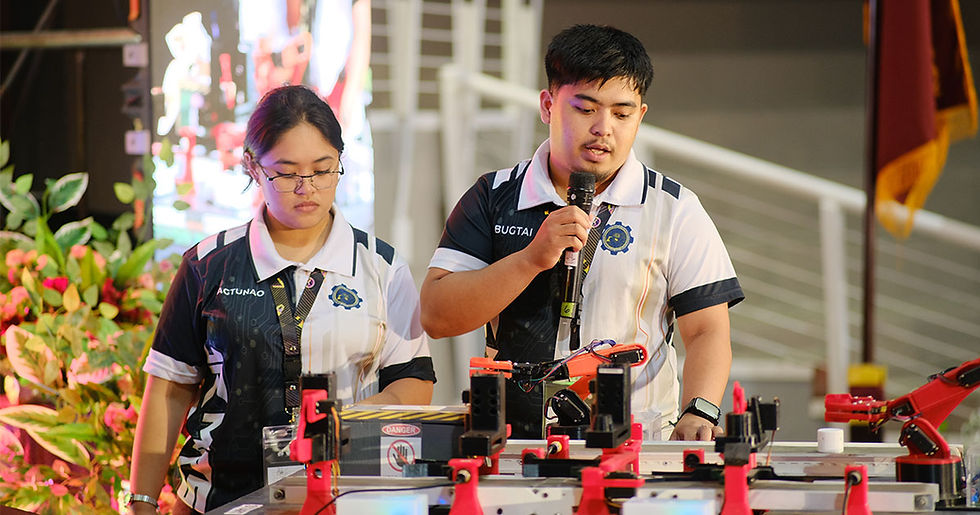Field Ready's way reduces harmful environmental impact
- Field Ready

- Sep 1, 2020
- 4 min read
Updated: Sep 3, 2020
People need essential items quickly in a disaster- or conflict-affected area. But the problems created by carbon emissions and other waste have largely been ignored in traditional humanitarian aid.
Until now, getting aid to those in need meant a trade-off - helping people but hurting the environment. Localized manufacturing, though, is a win-win. Making things locally translates to lower emissions because transport distance is reduced, less waste because there's less packaging required and a boost to local economies.

In short, by making needed items locally we can save lives while reducing our harmful environmental impact.
Problem
In August 2017, torrential rain caused widespread flooding and landslides in Nepal. According to Nepal’s Ministry of Home Affairs (MoHA), more than 30 districts of the country suffered damage as a result of heavy rain, flooding or landslides. More than 160,000 homes were destroyed, 13,000 families were affected and some 1,500 families were displaced.
The humanitarian community responded to the disaster with various forms of assistance including distribution of "non-food items" (NFIs) and a plan to distribute at least one field-grade bucket per family.
Easier said than done. The right bucket, originally designed by Oxfam, was made in only one place in the world and then transported to centralized depots before being distributed to faraway places in times of disaster. These logistics can make a $6 bucket into a $26 bucket, or more.
For a pallet of 200 buckets, the journey broke down like this:

Here’s a map of the buckets’ journey, a total of more than 15,000 miles (or 24,000 km):

In April 2020, Tropical Cyclone (TC) Harold ripped through the South Pacific and hit the island nation of Vanuatu particularly hard. TC Harold was the first Category 5 severe tropical cyclone on the Australian scale to strike Vanuatu since 2015. On the country’s largest island, Espiritu Santo in Sanma Province, between 80% and 90% of the population lost their homes during the storm. Every family affected deserved all the assistance they could get, including having basic items such as buckets for drinking water.
This isn't only an issue of buckets. Items as mundane as screws and piping to more complicated items such as assistive devices and latrines are shipped all over the world. For example, infant height measuring boards (pictured below) are little more than pieces of wood - but they're essential for monitoring children's growth during critical early years. These cost between $67 and $125 each depending on the features, and need to be shipped from a UNICEF centralized warehouse in Copenhagen, Denmark. From Denmark, they're shipped all over the world - which multiplies the cost and time to get to those in need.

The high costs are clear when the slow, expensive and cumbersome supply chains are considered. The long transfer process involves many stages and hand-off points, each of which involves time and expense. Between 60% and 80% of all humanitarian aid funding is spent on logistics in one form or another. The environmental impact of all this is significant.

Source: Eric James (2018), Managing Humanitarian Relief (Practical Action)
Solution
Significantly reducing the environmental impact is possible with a simple change that can be achieved with Field Ready’s approach to localized manufacturing. Instead of having finalized products processed through the global supply chain, useful items are made as close to where they're needed as possible.
In April and May 2020, Field Ready produced thousands of field-grade buckets in Fiji. We achieved this by working with a local company, Manubhai Industries, to make some 7,000 buckets. From this stock, 2,400 buckets were shipped with another partner, Mercy Ships. These buckets have since been distributed to people in need on Vanuatu's Espiritu Santo.
Results
Using the same methodology for a bucket shipped between Pakistan and Nepal, we have reached the following:

Methodology
Measuring the environmental impact of products - typically thought of as measuring their “carbon footprint” - is difficult and usually imprecise. In fact, a common metric known as embodied carbon - the sum impact of all the greenhouse gas emissions attributed to the materials throughout their life cycle (extracting from the ground, manufacturing, construction, maintenance and end of life/disposal) - typically does not include the supply chain itself. A huge part of emissions comes from transportation and the vehicles themselves. To reach useful and meaningful preliminary results, we've used this tool to determine the results shown on the chart above.
Conclusion
Field Ready has put in place the capability to locally make a range of needed relief supplies – from one-off fixes to mass-produced items – in a variety of settings around the world. We're also looking at how to extend the life-cycle of the materials used through non-organic materials and up/recycling. As we expand to new areas, we’re starting to note the positive environmental impact this has. We’re pleased with the results, shown here:

The potential to apply this same approach to many other essential items is enormous. For a look at what we've come up with thus far, please see Field Ready’s current catalog of parts containing more than 130 items (we also have a separate specialized list for the COVID-19 pandemic).

_edited.png)




Comments